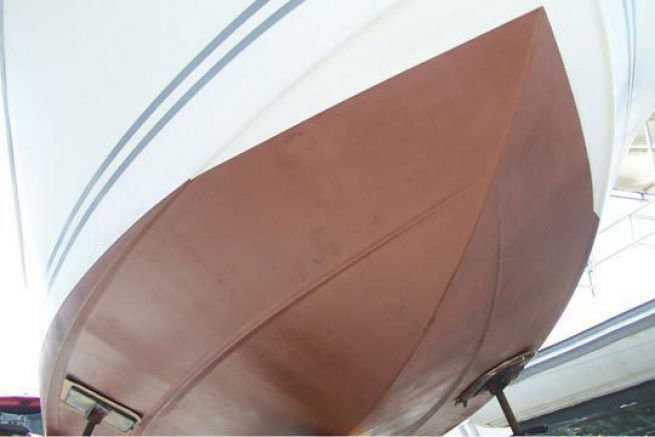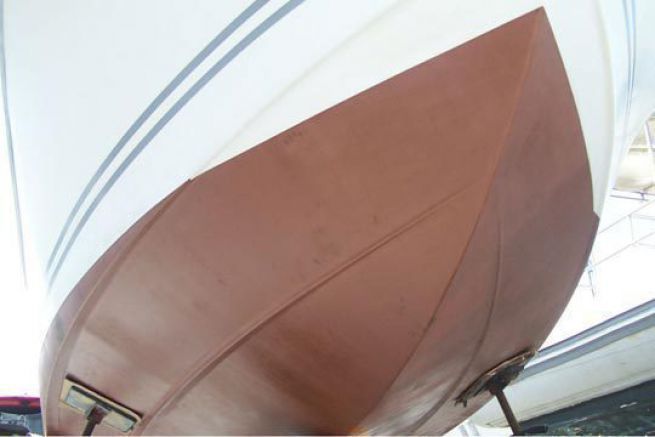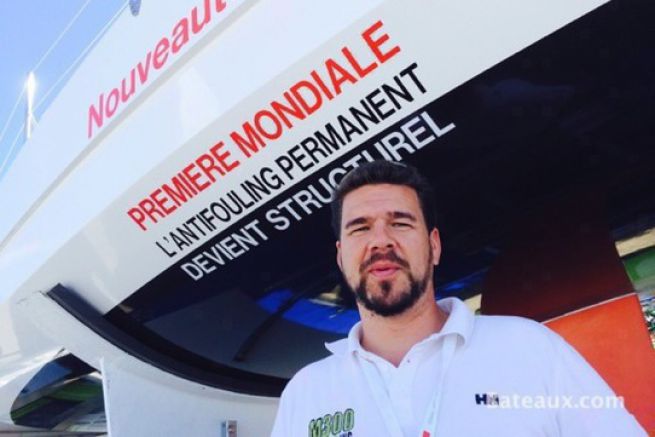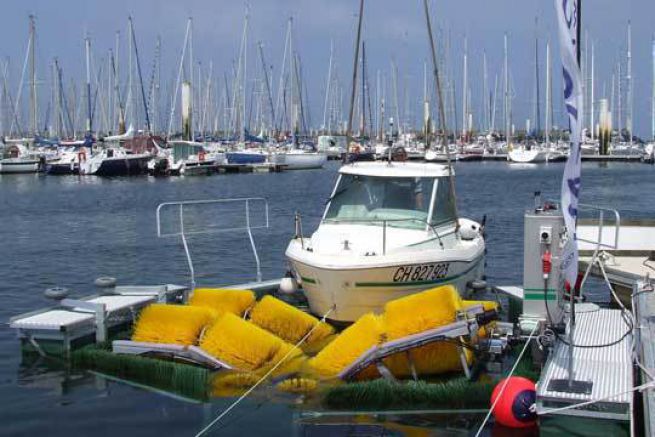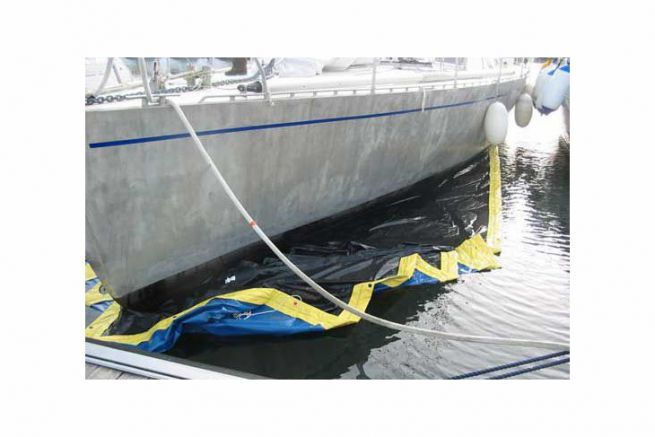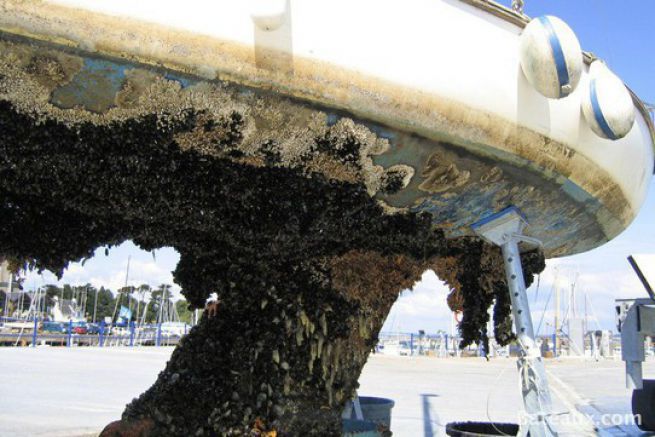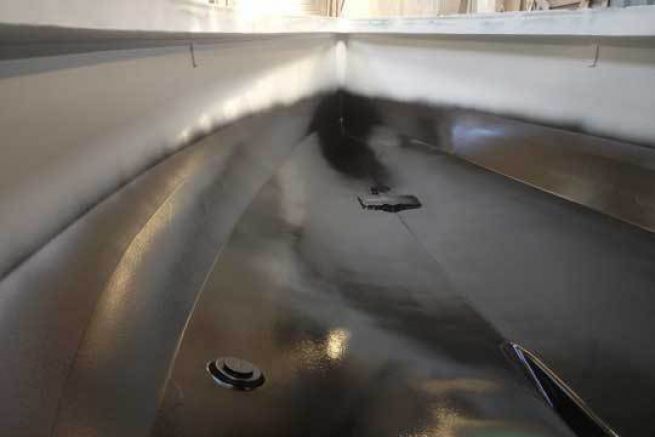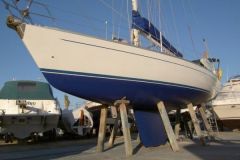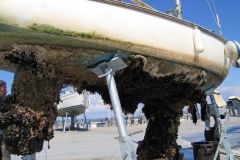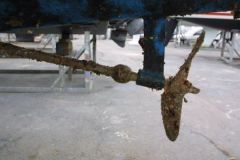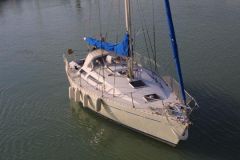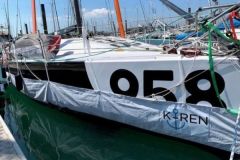Protecting the hull against fouling is an obligation as soon as the boat is in the water. This organic dirt limits the boat's performance or causes fuel over-consumption on a motorboat. To prevent small animals from using the hull as a home, there are several solutions.
The first, and most popular, is to paint his live artwork (the immersed part of the hull) with a so-called antifouling paint, which contains biocides. On contact with it, living organisms are killed. While this solution is effective, it is also polluting. The biocides in the antifouling are released from the hull by friction with the water and are diffused into the water. In addition, this paint must be renewed every year for its effectiveness to last.
Polluting and expensive (exit from the water, annual painting work), boaters would like to abandon this solution. But what are the possibilities of replacement?
Copper-filled resins
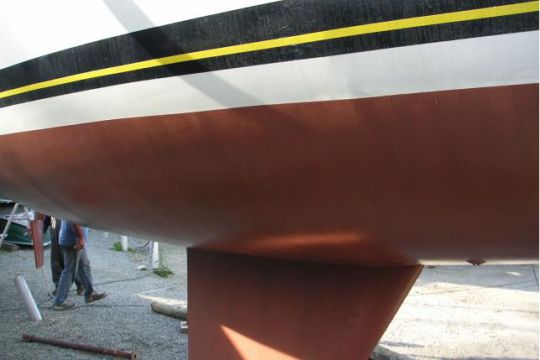
Copper is a good antifouling. Historically, copper sheets were plated on the hulls to limit fouling. Nowadays, using copper powder applied with resin gives good protection. There are 2 products, the Coppercoat and the M300, which work on the same principle: a two-component resin (epoxy for the Coppercoat and polyester for the M300) mixed with copper powder. It is applied in several coats on a clean hull. It can be applied with a roller by a private individual, although the result will be much cleaner with a professional application by a spray gun.
It should be noted that the last few years have seen the appearance (and unfortunately the disappearance) of several players on this market. Thus Océoprotect and KillFouling have both filed for bankruptcy.
Find here our subject about the M300
Benefits :
- Protects the hull
- Applies by the individual
- Possibility to achieve a nice gliding surface by sanding
Disadvantages :
- Returning to an original hull is complex and expensive
The self-adhesive silicone film
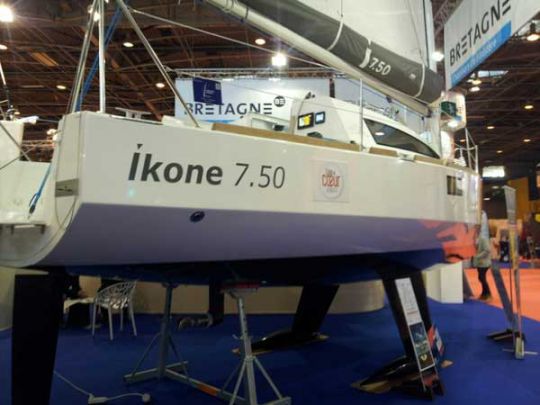
Flow Silikon is a self-adhesive film covered with silicone . On this surface, living organisms can't adhere. The self-adhesive film sticks to the hull. With a glue designed to withstand the marine environment (not repositionable), this film must be applied by a professional. Very young, we still have no feedback on the antifouling quality of this product.
Benefits :
- No painting to be done
- Can take off and return to the previous hull condition
Disadvantage
- Installation by a professional
- New product and unknown durability
Cleaning in the water
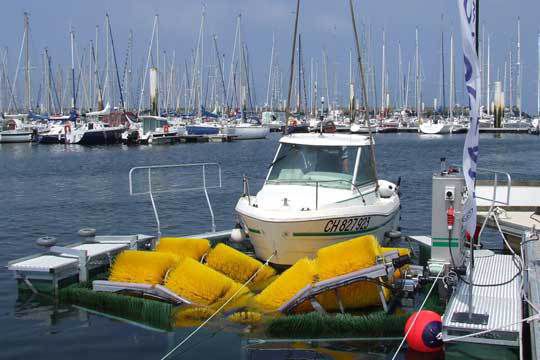
Rather than trying to apply a few antifouling products to the hull, why not leave it untouched and clean it regularly? And to simplify things, you might as well careen it afloat. This is the hull washing system that Bio-Ocean offers. No more water outlets and no more high-pressure washers. A roller system scrubs the underside of the hull before going out to sea.
Find here our subject on Bio-Ocean
Advantage :
- No pollution
Disadvantage :
- Roll at least every 3 weeks
- Requires an expensive port facility
- Does not work with biquilles or bisafrican boats
The tarpaulin to be temporarily installed under the hull
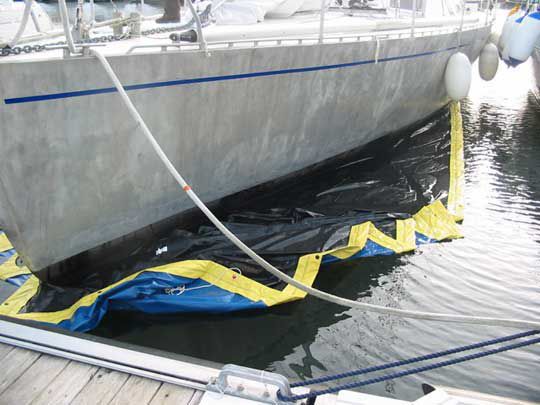
By installing a Parefouling film that is placed under the hull, we limit the colonization of living organisms. Simply place the film under the boat when it is stationary and remove it while sailing. This solution does not avoid the need for 100% antifouling, but it does give the antifouling a much longer lifespan.
Find here our subject on Parefouling
Benefits :
- Hull always clean when leaving the tarp
Disadvantage :
- Handling for putting the film in place
- Exterior of the film gets dirty quickly
- Limited to motor boats or sailing boats with lifting keel
Ultrasonic hull protection

Ultrasound disrupts life underwater. By installing one (or more) probe(s) against its hull, it vibrates at the frequency of the ultrasounds and no one clings to it. To the detail that to operate, the device is energy consuming. You need good batteries and a solution to recharge them. Because to be effective, the device must work 24 hours a day. The advantage is that it doesn't pollute at all. Several models exist on the market:
- Electroclean distributed by Navicom
- UltraSonic distributed by Ecomed Solutions
- Harsonic distributed by Gom'air
Benefits :
- Simple installation without even taking the boat out of the water
Disadvantages :
- Ask to be connected 24 hours a day
